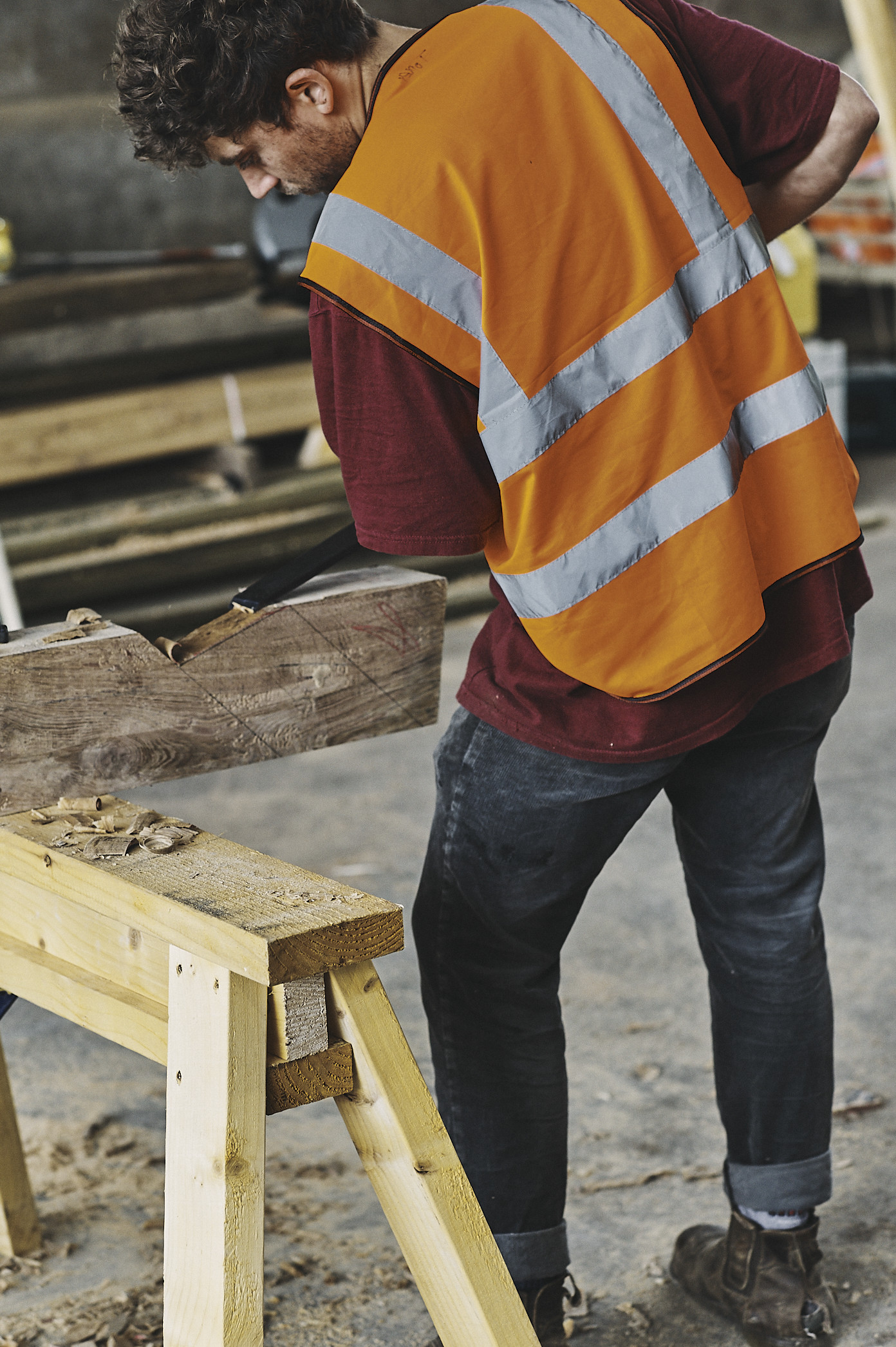Journal 4 December 2019
The Prince's Foundation Live Build Projects
Each year the Live Build project at Dumfries House sees students team together to apply their newly learned craft skills to real-life scenarios
For anyone finessing a new craft, putting class-taught skills into practice is an essential part of the learning process. This has become a central tenet of The Prince’s Foundation’s Building Craft Programme, which pairs the practical with the academic on an eight-month course designed to nurture the next generation of master craftsmen. Students spend one week at The Prince’s Foundation’s headquarters in Shoreditch, London, before embarking on a 10-week ‘Live Build’ at Dumfries House, Scotland.
Here, working alongside other students and construction professionals, participants gain first-hand experience while completing a project on-site. “The opportunity to gain site experience on a traditional build is hugely beneficial,” says Simon Sadinsky, Deputy Executive Director of Education at The Prince’s Foundation. “It is also an important opportunity for the students to understand how their trade fits into the wider built environment – to learn from and with craftspeople from other disciplines. The balance between educational programme and the realities of a commercial, time-sensitive build can be a challenge but is one that will provide immensely useful as they go one to develop their careers in the sector.”

And the results speak for themselves. In a survey of former students earlier this year, it was found that alumni from the programme have worked on more than 300 heritage projects and 80 per cent of alumni now work in the heritage sector. “I have been very privileged to go on from the live build to work with a number of quality craftspeople across the UK,” says course alumni Owen McClatchey, who initially studied economics and politics before a spell volunteering in the construction sector led to a joinery apprenticeship and a chance to study on the Building Craft Programme. “Thanks to links with The Prince’s Foundation I’ve had the opportunity to work on private estates, Oxford colleges, listed buildings and other historic structures.”
For his Live Build project, McClatchey was part of a team that constructed a woodland shelter in the Maguire Arboretum, creating a rest area for walkers on the Estate. “I was able to hone my skills in timber framing,” he says. “Working on the joinery of the curved upper windows and door without much supervision allowed me the chance to develop autonomy in thinking about joinery tasks.”
Stonemason Lily Marsh worked in the prison service prior to enrolling in the Building Craft Programme. At Dumfries House she worked on the construction of a tea room for the walled garden, applying her carving skills to decorative elements while working alongside other skilled craftsmen “The live build was special because it was a chance for different craftspeople to work together to design and build a structure we all had a shared responsibility and feeling of ownership for. I think this reinforced feelings of pride in our work and in the structure we’d built together.”

Both McClatchey and Marsh have continued their progression in their chosen craft after graduation, with both returning to The Prince’s Foundation to pass on their skills as tutors. “The chance to come back and tutor on a Live Build was an exciting one and I found myself developing in project management, teaching and team organisation,” says McClatchey. “I enjoyed passing on my experiences and finding ways to develop everyone in the workshop.”
Students will also able to take part in Live Build projects as part of the Building Arts Programme (formally The Traditional Building Skills programme) which is being delivered in partnership with the Queen Elizabeth Scholarship Trust. As part of this programme, students will take part in UK-wide placements which offer the chance to hone key trade skills, before participating in the Live Build element as part of their final project. The Building Arts Programme brings together students with backgrounds in architecture, building craft, decorative and applied arts to explore the holistic nature of the built environment, examining the role that craft can play in the creation of everything from the symbolic architectural ornament to the urban form.

Over the past year, Prince’s Foundation students have restored an old well building at Highgrove, constructed a pavilion in the newly refurbished walled garden at Hillsborough Castle, as well as erecting a large stone obelisk at Poundbury. Tom Stainer, from Sherborne in Dorset, is a stonemasonry student at Weymouth College and had the chance to work on the stone obelisk at Poundbury.
“I feel very privileged to be working on such an iconic project. The obelisk is going to look incredible when it's complete. It will be able to be viewed from the stonemasonry department at Weymouth College so we'll be able to look out the window with a sense of pride. My carving skills have taken me to heritage projects in the UK and much further afield. I represented England in Egypt recently by carving one of 50 stone hearts for a presidential memorial but I am most excited about contributing to the landscape on my own home turf. I come from just outside Poundbury so it's a bit of a big deal for me,” says Stainer.

February 2020 will see the launch of the new Building Arts Programme, which will aim to inspire a future generation of designer, artists, and makers to create a built environment which draws on a vast array of different skills, celebrating the physical, temporal and even symbolic connections which can be realised through our buildings and places.





